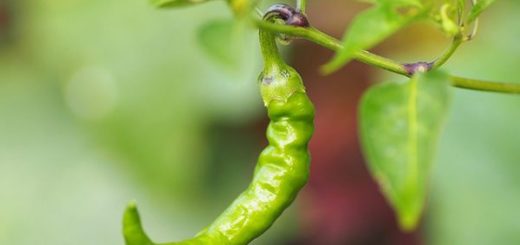Violet Care: How to Plant, Propagate, Water at Home? Tips

Despite its simplicity, Violet immediately shows itself with its eye-catching beauty. Due to its small size and the conditions it needs, the violet flower is among the most frequently seen flowers in homes. This modest flower, which is mentioned in the songs as “a sad purple violet”, has a sad, sad feeling just as it is said.
If you want this unique flower to add color to your home, you need to obtain sensitive information such as violet care, soil, irrigation and act in accordance with these sensitivities. The soil in which the flowers grow is one of the most important factors to be considered. A more fertile soil structure can be obtained by mixing materials such as perlite, vermiculite, peat, pumice.
Violet Flower Characteristics and Varieties
Violet maintains its vitality for a long time when properly cared for and its needs are met, and its colorful flowers do not fall for a long time. As a pot flower, violet varieties, which have close to 500 species around the world, can be grown almost anywhere in the world.
Violets grown in Turkey are limited to a few species:
- Purple violet occupies a special place as the most common variety.
- The type called glass violet is known for its multi-layered structure and two-colored flower.
- An aerial species, the pansy gets its name from its indecision about color.
- African violet is among the common violet species in our country.
Violet care is effortless and easy; Often just watering is sufficient. It likes bright areas, but does not like direct sunlight. It is recommended not to get direct sunlight and to benefit from the reflected light.
The choice of pot and soil is important. Since the roots of the violet flower are not long and multiply horizontally, it is placed in wide pots, not deep pots. There must be a drainage hole at the bottom of the violet pot, as excess water accumulates can cause rot.
Violet Flower Care at Home: What are the Tips?
- Violet Soil: In order for the roots of the flower to receive the oxygen they need, a light and moisture-retaining soil is required. Violet soil can be obtained by mixing one part peat, one part perch or pumice, and one part vermiculite.
- Violet Pot: Violet pot becomes wide, not deep. Flat pots are ideal as the roots of the violet don’t go too deep and spread around. The violet, which can grow with a little soil in a flat pot, needs to be fertilized. Ready-made violet fertilizers can be purchased and used. During the flowering period, fertilizers with high phosphorus content should be used.
- Heat, Light and Humidity: Violet loves daylight; but it is disturbed by direct sunlight. It should be behind the curtain or benefit from the reflected light. Humidity is very important. If the humidity in the environment is not sufficient or the air dries frequently due to the heating method, precautions must be taken with applications such as humidity trays. Glazed pots that retain more moisture are recommended.
- Positioning at Home: It should neither be placed directly in front of the window nor too far away. If it is to be placed close to the window, an east-facing window with non-scorching daylight in the morning provides ideal lighting. Violet, which is a tropical plant in its origin, can grow well in indoor conditions in Turkey. Temperatures below 15 degrees and above 27 degrees are not good for violets. Wind, strong air currents are not friendly to the violet. The violet pot should not be placed in places where there may be drafts.
How to Plant a Violet, Reproduce?
Reproduction as well as violet care requires attention to tricks. To propagate the violet, the method of separating it from the healthy roots of the plant is used. Sections emerging from the root and extending upwards form sprouts for new plants. By planting these new violets in new pots, new violets can be grown.
It grows as big as the size of the violet pot, it is recommended to change the pot for the flowers that start to overflow from the pot. If it is desired to remain small, it is also possible to keep it in a small pot. Rotting leaves and branches often need to be removed. When the pot is changed, new leaves appear quickly and violets multiply. Over time, the violet, whose leaves and stems grow, may stop blooming when it feels cramped. It is recommended to clean the yellowed, faded leaves and to make the plant comfortable. Dried leaves and branches also affect the air circulation negatively and can make the flower sick.
Leaf rooting method can also be used for violet propagation. Thanks to this method, which is made by removing a healthy violet leaf, violet reproduction can be made without giving small offspring from the side of the violet. Thus, it may be possible to reproduce a violet species you like by removing only one or two leaves. In this method, the cut leaf is kept in water for a while and the roots can be seen with the naked eye after a while. After the violet soil is prepared and placed in the pot, the rooted leaf is planted in the pot with violet soil and the vital water is poured. It is also possible to plant the leaf directly into the ground; however, soaking in water first may give more effective results.
Violet Watering Techniques: How Often Should It Be Watered?
Irrigation frequency and form are just as important as the soil. For watering violets, it is recommended to use at room temperature, without chlorine. Hot or cold water that is not at room temperature can cause unwanted damage to the branches and leaves of the plant. Allow the top of the soil in the pot to dry before watering the violet to allow more flowers to form. Violet watering does not rot when done from the pot base. For a healthy irrigation, plenty of water should be placed on the substrate, and after 15 minutes, the remaining water should be poured after the soil is pulled. If water is to be given from the top, it is necessary to water the soil, not directly on the plant.
Violet should be watered on average twice a week in hot summer months and once a week in winter months. Both over watering and under watering can have lethal results for the plant. One of the tricks about watering violets is to give the same amount of water each time. Violet, which is very sensitive about the irrigation scheme, requires the same amount of water each time. Like changes in quantity, timing can negatively affect the flower. In general, it is recommended to irrigate in the same period and not to change the timing.
Earthy and Sweet Floral Flavored Violet Oil
But does the violet, a small and delicate pot flower, smell?
Although it does not spread the smell of home grown violet flower throughout the house, it has an impressive smell and aroma. Just like the beauty that comes from its unpretentious simplicity, its fragrance is not overpowering, but uniquely beautiful. Most commercially grown violets are therefore used in the perfumery industry.
The violet oil taken from the leaf has a more earthy aroma, while the violet oil obtained using the violet flower provides a sweet floral scent. Commercially available violet oil products are derived from violet leaves; Violet flower oil is used in the perfume industry.
Violet Oil Benefits
Violet oil, which is produced from its flowers and leaves, has a special place in Mediterranean and Chinese culture. Oil with a sweet aroma is difficult to extract. Only 1 kilogram of oil can be extracted from 1 ton of violets.
Violet oil:
- therapeutic
- Diuretic
- It is known for its antiseptic properties.
The oil, which is said to be beneficial for skin health and is said to be beneficial when applied with massage to painful and rheumatic areas, can also help solve sleep problems with its soothing effects. Violet oil, which also has different benefits, must be used consciously after consulting a doctor. It should be noted that otherwise, undesirable results may occur.
Violet Prices
Violet is a very reasonable flower in terms of prices. It can be taken in small pots to reproduce and grow, or different advanced violet species can be preferred. Some special blends also contain violet species used in herbal teas.











